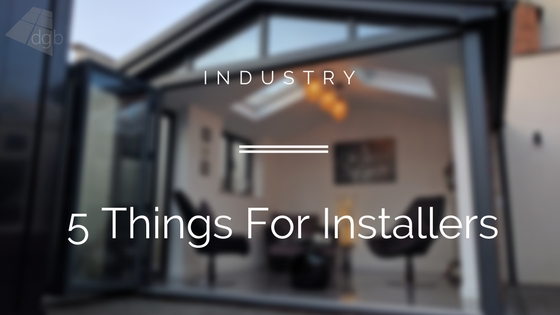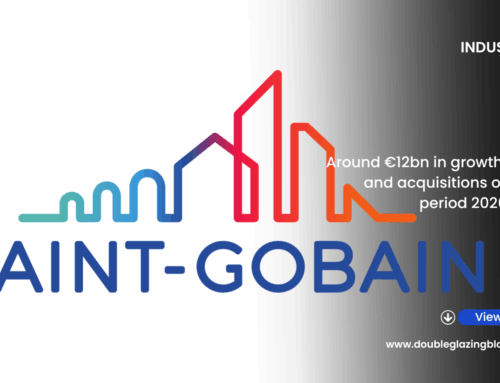It’s 2018. An age when you can order pretty much anything, from anywhere, from your phone and have it delivered to your front door. You can track your pizza from Dominoes. Amazon tells you when your latest purchase is going to be delivered to within an hour. You can book a whole vacation via your small little screen.
It’s an extraordinary technological age we live in, and it permeates our lives in every aspect, including our work lives. Yet, in the window industry, the pace of evolution is patchy at best. Some companies have moved forward quickly, adapting to changing expectations and technological capabilities. Some have not, and there are real gulfs between those who have invested and those who have not.
In the world of window and door fabrication new technologies and software is already disrupting the established way of doing things, for the better. But as I said, that evolution is patchy, and will be a problem for installers who are looking to their fabricators to support them in their own drive forward to become more efficient, quicker and more profitable.
So, in this very advanced year, these are my five things that window and door installers should be able to do.
1. Ability to price everything online
There’s a few cloud-based online pricing systems out there at the moment. You wouldn’t say we’re drowning in choice, but the number is slowly growing. For an installer who is looking to process their prices and send out quotes to home owners as quickly as possible, they need the ability to be able to access prices for products instantly.
This is possible for some products. Windows and composite doors for example. But for many other products that system simply isn’t there yet, but it should be. Take bi-fold doors, in both PVCu and aluminium. So many installers still have to email their specifications to their fabricators to obtain a price. Why? There are some online pricing systems out there, but as I said, not many.
Anything that adds time to the pricing process for an installer increases the chances that they lose the business to a competitor who is able to churn a quote out almost instantly. So, in 2018, every installer should have the ability to price for themselves all products across all parts of our sector. Windows, doors, bi-folds, lanterns, conservatory roofs both glass and solid, and all other products in between.
2. Track orders
Just like you can track the progress of your order from the likes of Amazon and Google, installers should be able to track their orders with their fabricators.
In fairness, I am seeing one or two companies just bringing in this sort of tech now, but it is far from being widespread. Yet, the technology has been out there in other industries for years. This is nothing new.
It’s not that difficult either. It’s just a case of companies putting their hands in their pockets and setting up the infrastructure. I’m dumbing it down a little, but it’s a case of putting in place IT systems that would track a unique code or barcode on each window/door/roof etc. The system at the fabricator’s warehouse would at various stages be able to track that barcode and would in response confirm the progress of production. At the installer end, an app or cloud-based system could keep them updated as to the progress of their order. Like your Dominoes pizza.
Think of the advantages. An installer would be able to be far more accurate in their planning of fitting schedules and can react much more accurately to changing dates. Fabricators could then keep in constant contact with their installers.
3. Request marketing materials
Installers, how do you request brochures from your fabricators?
I’ve seen brochure requests in emails, via Twitter, over the phone. But why can’t you request marketing material via the cloud or a fabricator’s website? yes you can download PDF versions. But a lot of home owners still want physical copies. And when it comes to prestige contracts, printed materials does sometimes help.
I know at our place we go through quite a lot of printed marketing materials, alongside PDF versions. Yet we still have to ask many of our suppliers to send us brochures. It would be much easier if there was a facility either on the cloud or via their websites where we could enter an order for brochures or other marketing materials they have. Done. Easy. No emails. No phone calls or tweets. We don’t need to bother someone else, we can just do it ourselves.
4. Rapid remedial response
I am going to do a whole mega post on the revised consumer protection laws, as the ramifications for our industry are much more serious than many perhaps realise. But out of this, comes the very serious need for installers to be supported by the fabricators when it comes to remedial work.
We don’t live in a perfect world, we know that. Mistakes when it comes to quality and production of windows and doors will always happen. But due to the very stringent nature of the revised consumer rights, installers now have just one opportunity to put right anything that might be wrong with an installation. If this is unsuccessful, the door is then opened to things like compensation and full refunds for up to a period of 53 weeks. The result is next to no protection for business, with the new framework being pretty easily bendable to any home owner who might decide to use these rules to claw some money back.
This is where I would urge fabricators to take a good, long, hard look at current consumer rights laws. Installers need their suppliers to be absolutely on the money when it comes to quality control, because a single mistake could cost the installer and the fabricator thousands of pounds. A rapid remedial response service from all fabricators could help reduce that risk.
5. Flexible pricing
I think one area that is still shrouded in mystery is pricing. We’re living in a transparent age, where access to data and prices of all things can be found in seconds. Yet, installers are still at the mercy of price increases from suppliers, with reasons being pretty woolly.
In 2018, should it now be the case that prices are much more reactive than what they are now? With live price data, cloud-based software, apps, websites and databases, would it not be a major step in the right direction for our sector? Instead of installers being handed letters or being told over the phone, would it not be easier to apply those increases, and indeed decreases, as and when they need to happen?
I believe that our industry should take a lead on reactive pricing, rising and falling when raw material prices, commodity and manufacturing costs do.
All of these points I raise are designed to transform our industry into a much more tech savvy one, that’s dragged properly into 2018 and equipped for a future that is only going to evolve even quicker as technology and expectations from home owners advance. The rate of change has never been as quick as it is right now, and we have to be ready for that.
To get weekly updates from DGB sent to your inbox, enter your email address in the space below to subscribe:







